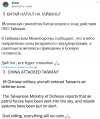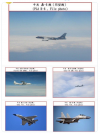Install the app
How to install the app on iOS
Follow along with the video below to see how to install our site as a web app on your home screen.
Note: This feature may not be available in some browsers.
You are using an out of date browser. It may not display this or other websites correctly.
You should upgrade or use an alternative browser.
You should upgrade or use an alternative browser.
Kiinan sisällä kuohuu
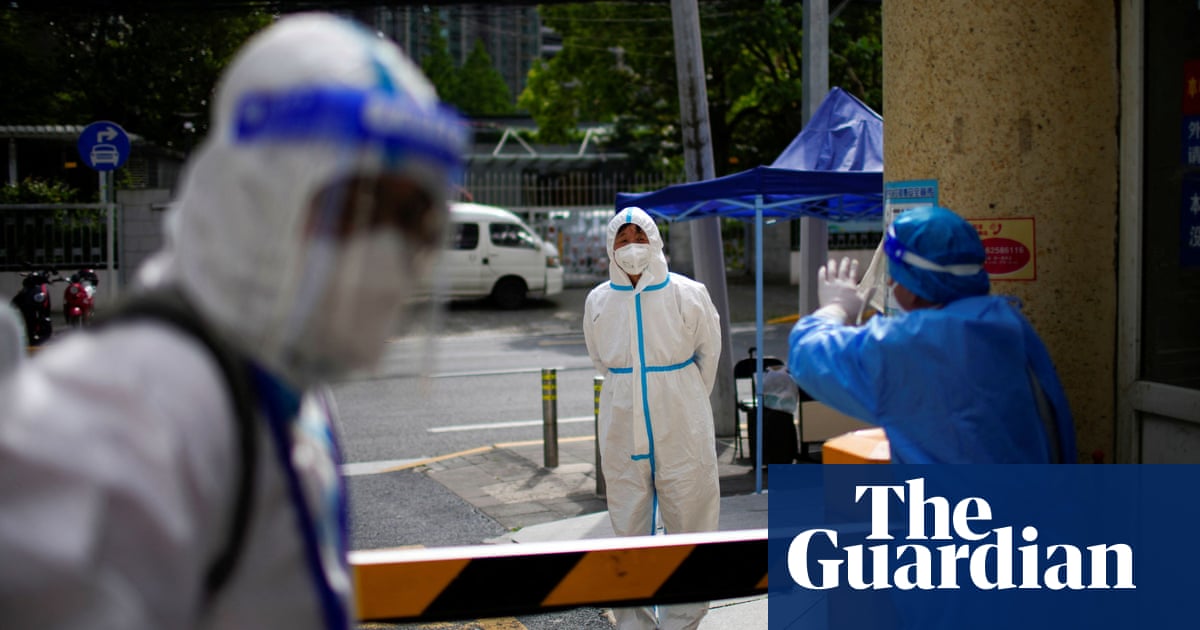
 www.theguardian.com
www.theguardian.com
Six people are under investigation in Shanghai after an elderly nursing home resident was mistakenly declared dead, put in a body bag and taken by coroners to a waiting van before mortuary workers noticed they were still alive.
The incident, which took place on Sunday afternoon, was filmed by onlookers and footage quickly spread online, sparking a furious backlash in the city which has been under a gruelling lockdown for five weeks. It also prompted concerns over the city’s overwhelmed medical system.
In the footage, workers wearing protective clothing are seen pulling a bodybag out of the mortuary van on to a trolley. They look inside the bag before realising the person inside is alive.

Outcry in Shanghai as person declared dead and put in body bag found to be alive
Incident prompts concerns over city’s overwhelmed medical system during weeks-long Omicron lockdowns

According to information published by the Philippine News Agency on April 27, 2022, South Korea will supply K-136 Kooryong 130mm Multiple Launch Rocket System (MLRS) to the Philippine Army and the Philippine Marine Corps with expected delivery in June this year.
South Korea to donate K-136 Kooryong 130mm MLRS rocket launcher vehicles to Philippines | Defense News May 2022 Global Security army industry | Defense Security global news industry army year 2022 | Archive News year
South Korea will supply K-136 Kooryong 130mm Multiple Launch Rocket System (MLRS) to the Philippine Army and the Philippine Marine Corps
On April 14, Ukraine once again shocked the world when it launched two Neptune anti-ship cruise missiles, scoring decisive hits that sunk the Russian Black Sea Fleet flagship Moskva. Named for the Russian capital Moscow, this once-symbol of Russian naval supremacy in the war on Ukraine carried a crew of roughly 500 and was fully equipped with an arsenal of anti-ship, anti-aircraft and air defense missiles. Despite its foreboding appearance, this pride of the Russian Federation was unable to defend itself against a small number ASCMs, and it paid the ultimate price.
The fallout from the Moskva sinking has been many faceted. First and foremost, it was a strategic success for Ukraine — taking Russia’s most lethal warship out of the war and forcing the remaining fleet to retreat farther away from the coast. Second, the sinking is an inescapable political problem for Russian President Vladimir Putin. His misinformation campaign within Russia, unable to suppress the news of this casualty, now must answer for this destroyed vessel and the well-being of its crew.
There is another message from this catastrophe, however, that both the U.S. Navy and Congress must consider when faced with making long-term spending decisions for our 21st century fleet: If a relatively low-cost, short-range missile such as Neptune can destroy one of the largest warships in the Russian Navy, how do we ensure that ships in our fleet are not doomed to the same fate?
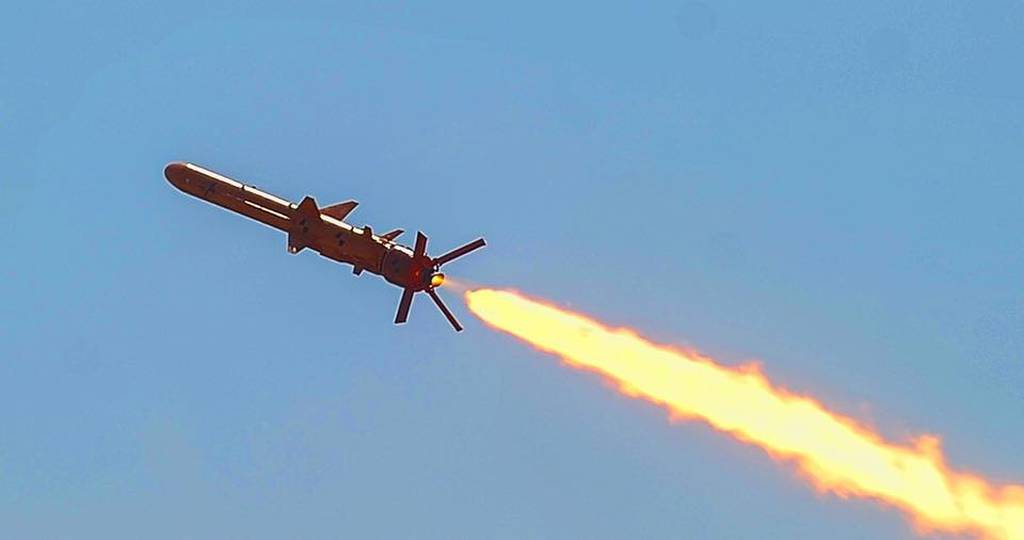
Moskva’s sinking, the rise of anti-ship cruise missiles and what that means for the US Navy
If a relatively low-cost, short-range missile can destroy one of the largest warships in the Russian Navy, how do we ensure that ships in our fleet are not doomed to the same fate?
Tuore video Kiinan ja Taiwanin tilanteesta. Vaikka asia ei täysin uusi ollutkaan, Taiwanin merkitys puolijohdeteollisuuden kärjessä korostui kyllä entisestään. Kylmäävää ajatellakaan millaisen kyykkäyksen maailma tekee jos Taiwaniin hyökätään.
Maailman puolijohteet tulee Taiwanista ja niitä käyttävä elektroniikka Kiinasta (vähän karrikoiden). Ollaan syvällä kusessa jos tuolla alkaa rytistä.
Tekeekö Kiina Venäjät?
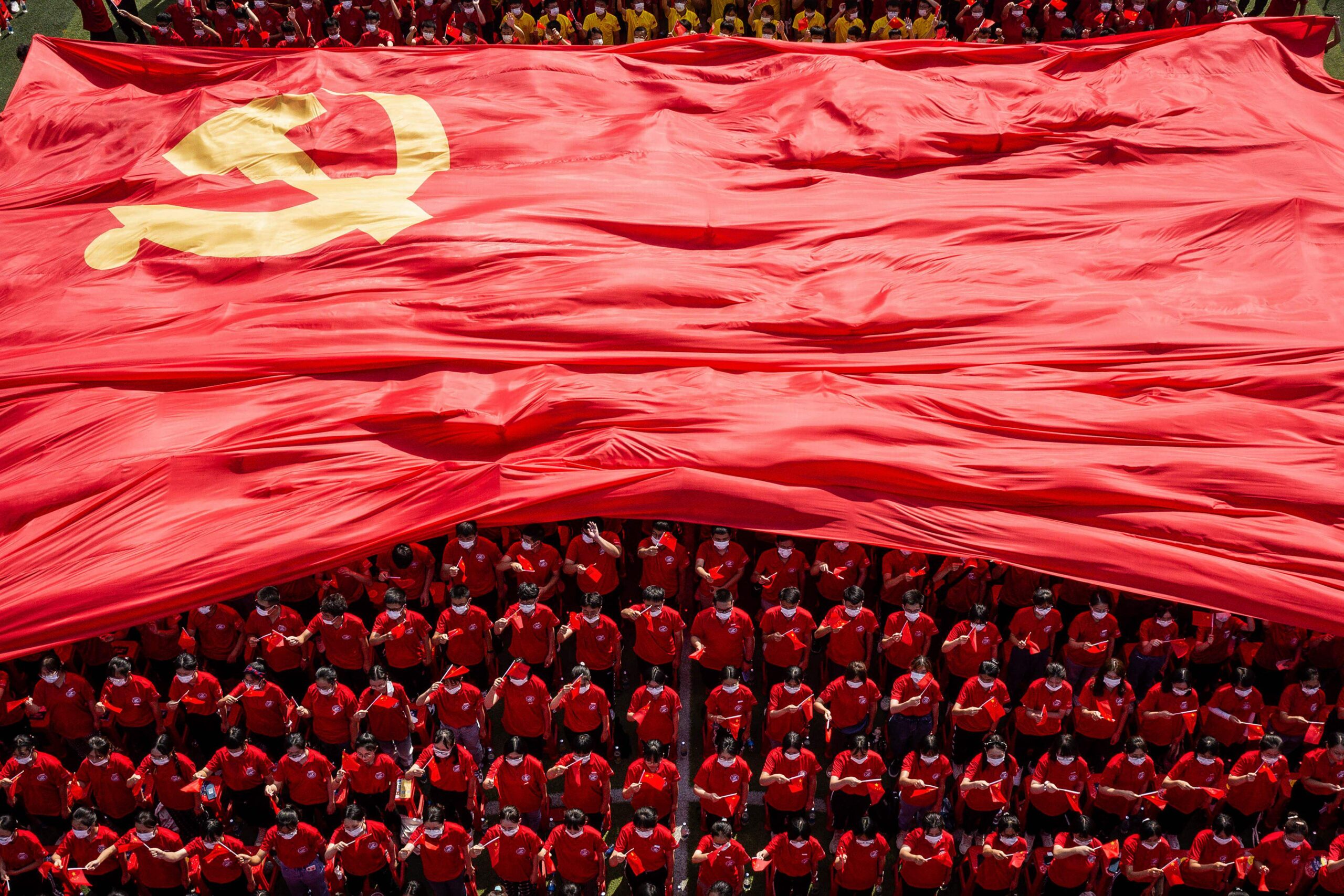

Kiinaa pidetään nousevana mahtina - oikeasti se voi olla jo luisumassa alaspäin | Verkkouutiset
Kirjoittajan mukaan maassa on siirrytty presidentti Xi Jinpingin yhden totuuden aikaan.
www.verkkouutiset.fi
Infosec outfit Cybereason says it's discovered a multi-year – and very successful – Chinese effort to steal intellectual property.
The company has named the campaign "Operation CuckooBees" and attributed it, with a high degree of confidence, to a Beijing-backed advanced persistent threat-slinger going by Winnti – aka APT 41, BARIUM, and Blackfly.
Whatever the group is called, it uses several strains of malware and is happy to construct complex chains of activity. In the attack Cybereason claims to have spotted, Winnti starts by finding what Cybereason has described as "a popular ERP solution" that had "multiple vulnerabilities, some known and some that were unknown at the time of the exploitation."
Once ERP was compromised, Winnti sought out a file named gthread-3.6.dll, which can be found in the VMware Tools folder. The DLL was used to inject other payloads into svchost.exe, with installation of a webshell and credential dumping tools high on the crims' to-do list.
Cybereason's technical deep dive into Winnti's techniques details many efforts to hide its activities.
Among the crew's techniques employs the Common Log File System (CLFS) present in Windows Server, as it uses an undocumented file format that can be accessed through APIs but can't be parsed. That makes CLFS data a fine place to hide payloads. Cybereason says Winnti did so, and was able to evade detection for years – the firm suggests Operation CuckooBees commenced in 2019 and went undetected until 2021, thanks largely to its use of CLFS and other sophisticated techniques to hide.
"With years to surreptitiously conduct reconnaissance and identify valuable data, it is estimated that the group managed to exfiltrate hundreds of gigabytes of information," the firm opines. "The attackers targeted intellectual property developed by the victims, including sensitive documents, blueprints, diagrams, formulas, and manufacturing-related proprietary data," Cybereason's analysis adds.
The firm asserts that the attacks focused on "technology and manufacturing companies mainly in East Asia, Western Europe, and North America." Global tech and manufacturing hotspots all.
The USA and other nations credibly accuse China of conducting or at least turning a blind eye to industrial espionage campaigns. Cybereason's analysis of Winnti's attacks techniques suggests they required a lot of resources to create and operate, and were likely the result of Beijing's espionage efforts.

Chinese gang used stealth attacks to loot IP for years
Infosec outfit says group avoided detection by hiding payloads in undocumented Windows logs
If you search the Chinese microblogging platform Weibo for “Shanghai lockdown” (“上海封城”), you’ll find plenty of videos of deserted streets and emergency workers delivering food. There are fewer signs of the collective outrage, anger, and desperation that has gripped the city’s 26 million residents, who have been confined to their homes since April 5 and are struggling to get hold of food and medicine. You probably won’t find, for instance, a shocking video of pandemic workers clubbing a pet corgi to death after its owners were taken away to be quarantined, although there are references to the infamous incident, which became a symbol of the harsh lockdown conditions.
The situation became desperate as supplies of food ran short days after the lockdown was enforced, and some people were denied access to medical care. In response, residents are dodging China’s notorious online censorship system to document their experiences and vent their anger on sites that include Twitter-equivalent Weibo, the ubiquitous messaging app WeChat, and the Chinese version of TikTok, Douyin.
China has one of the world’s most advanced internet filtering and censorship apparatuses, known as the Great Firewall. Back in 2013, state media said around 2 million people were employed to track content posted online, and Yaqiu Wang, senior China researcher at Human Rights Watch, says censorship has become stricter since then. But the Shanghai lockdown is demonstrating the cat-and-mouse dynamics that are central to social media censorship, even in a country that devotes huge resources to wiping the internet clean from dissent.

Shanghai Is Rewriting Chinese Censorship Amid Lockdown
Censors are cracking down on free speech online, but people are finding new ways to get around them.
tankki-tapsa
Kenraali
Kiinan hyökkäys Taiwaniin ja mahdollinen samaan aikaan tapahtuva "Etelä-Kiinan meren" haltuunotto esim. miehittämällä muutama Filippiineille ja Vietnamille kuuluva saari näyttää pahasti WW3 aloitukselta. Se on selvä merkki, tai paremminkin suora toimi, siitä että Kiina luopuu "puolueettomuudestaan" ja "pehmeästä" voimankäytöstä ja siirtyy suoraan roistovaltioiden, ei enempää eikä vähempää, kuin johtoon.
Täällä on syystäkin naureskeltu ryssää mutta kiinalaisten hartiat ovat sitten jotain aivan muuta. Teollisuuden iskukyky ja talous, jopa monet strategiset luonnonvarat on pelattu Kiinan pussiin. Voisi sanoa että Kiinan suhteen koko länsimaailma on yksi suuri liittokansleri ScholZ.
Ettei ajat vain menisi ensin paljon huonommiksi ennen kuin ne voivat parantua.
Täällä on syystäkin naureskeltu ryssää mutta kiinalaisten hartiat ovat sitten jotain aivan muuta. Teollisuuden iskukyky ja talous, jopa monet strategiset luonnonvarat on pelattu Kiinan pussiin. Voisi sanoa että Kiinan suhteen koko länsimaailma on yksi suuri liittokansleri ScholZ.
Ettei ajat vain menisi ensin paljon huonommiksi ennen kuin ne voivat parantua.
Tällä tempulla Kiina lähtisi suoraan nokittamaan USA:ta ja siinä on kova kovaa vastassa, ainakin hetken. Kyllä se fakta on ettei USAn meri tai ilmavoimia voi kukaan haastaa... yksinään. Alkaa vaan olla niin monta rautaa tulessa, että riittääkö voima?Kiinan hyökkäys Taiwaniin ja mahdollinen samaan aikaan tapahtuva "Etelä-Kiinan meren" haltuunotto esim. miehittämällä muutama Filippiineille ja Vietnamille kuuluva saari näyttää pahasti WW3 aloitukselta. Se on selvä merkki, tai paremminkin suora toimi, siitä että Kiina luopuu "puolueettomuudestaan" ja "pehmeästä" voimankäytöstä ja siirtyy suoraan roistovaltioiden, ei enempää eikä vähempää, kuin johtoon.
Täällä on syystäkin naureskeltu ryssää mutta kiinalaisten hartiat ovat sitten jotain aivan muuta. Teollisuuden iskukyky ja talous, jopa monet strategiset luonnonvarat on pelattu Kiinan pussiin. Voisi sanoa että Kiinan suhteen koko länsimaailma on yksi suuri liittokansleri ScholZ.
Ettei ajat vain menisi ensin paljon huonommiksi ennen kuin ne voivat parantua.
Pelko pois. Kiina tietää jenkeillä olevan teknologiaa jolle kukaan ei voi mitään. Kiina pysyy aisoissa siellä päin maapalloa. Se on salpa.Tällä tempulla Kiina lähtisi suoraan nokittamaan USA:ta ja siinä on kova kovaa vastassa, ainakin hetken. Kyllä se fakta on ettei USAn meri tai ilmavoimia voi kukaan haastaa... yksinään. Alkaa vaan olla niin monta rautaa tulessa, että riittääkö voima?
tankki-tapsa
Kenraali
^"Ongelma" on siinä että USA on demokratia eikä äänestäjät välttämättä ole valmiita suursotaan Aasiassa, etenkään kun vastassa ei ole joku pieni kehitysmaa vaan maailman suurin teollisuusmaa atomipommeineen.
Siellä on vahvat liittolaiset. Japani, Australia Etelä-Korea.^"Ongelma" on siinä että USA on demokratia eikä äänestäjät välttämättä ole valmiita suursotaan Aasiassa, etenkään kun vastassa ei ole joku pieni kehitysmaa vaan maailman suurin teollisuusmaa atomipommeineen.
The European Union has condemned the appointment of Hong Kong’s former security tsar, who oversaw the crackdown on Hong Kong’s pro-democracy movement, as the Chinese territory’s new chief executive with 99% of the vote in a secret ballot on Sunday.
Josep Borrell, the bloc’s foreign policy chief, said the selection process that led to John Lee being elected is yet “another step in the dismantling of the ‘one country, two systems’ principle”.
The EU “calls on Chinese and Hong Kong authorities to abide by their national and international commitments, notably the ultimate aim of electing the chief executive and members of the legislative council by universal suffrage,” Borrell said in a statement shortly after the confirmation of Lee’s appointment on Sunday.

EU voices concerns as former Hong Kong security chief made new leader
Fears grow that elevation of John Lee signals Beijing’s tough policy on Hong Kong is set to continue
Authorities in China have reportedly directed government agencies and state-run companies to bin all personal computers made by foreign companies and replace them with homegrown hardware within two years.
According to Bloomberg, "people familiar with the plan" recounted how government staff were told upon returning from China's Labor Day holiday, which ran from April 30th through May 4th, they will have to toss foreign PCs.
Bloomberg's report claims that the yet-to-be-officially-published mandate could lead to the replacement of as many as 50 million PCs by the central government.
The leading PC maker in the APAC region last year, according to research firm IDC, was China-based Lenovo, with about 30 percent of the market. HP came in second, with 14.3 percent market share, followed closely by Dell with 14.1 percent market share.
Figures specific to the Chinese market from Canalys, covering Q2 2021, show Lenovo with a 40 percent market share.
Lenovo stock, coincidentally, was up about 4 percent on Friday, following the publication of the report from Bloomberg. The NASDAQ Composite during that period fell 1.4 percent.
The Register asked HP and Dell to comment but we've not heard back. We also asked Apple to comment because a predictably uncommunicative communications department is always good for a laugh.
We reached out to the Chinese Embassy in Washington, DC, which did not respond. The Commerce Department didn't immediately respond to a query either. A US State Department spokesperson did get back to us to say the agency has nothing to say on the subject.
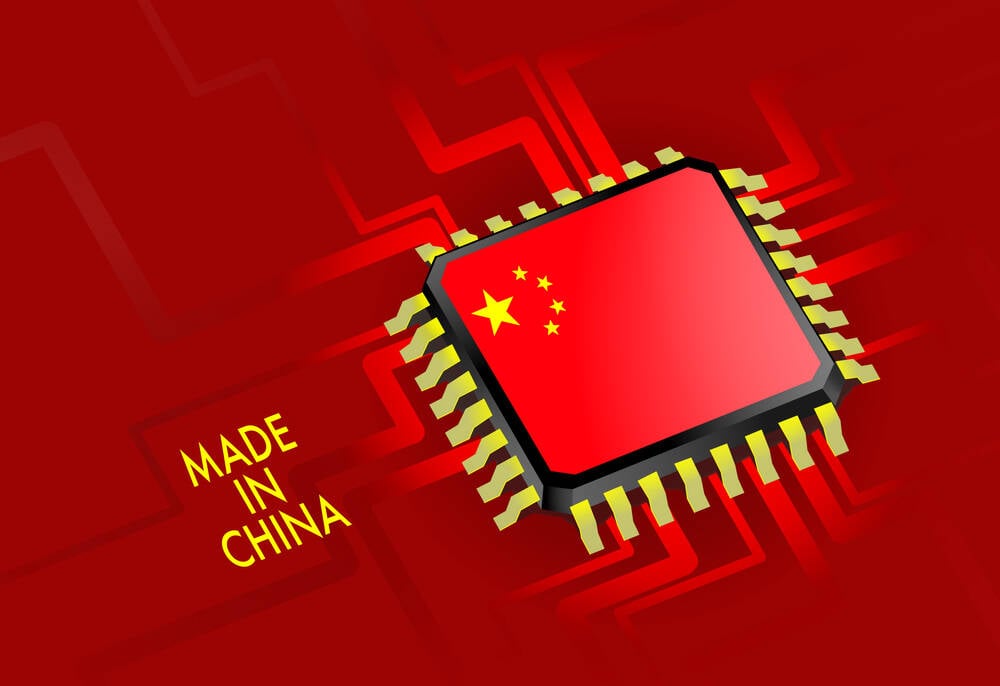
China to reportedly ax foreign PCs from government agencies
Just like it was supposed to do in 2019
Einomies1
Respected Leader
USA on sotinut viime vuosikymmeninä paljon enemmän kuin Kiina ja on valmiimpi konfliktiin teknologisesti, sotilaallisesti sekä poliittisesti jos niin tarvitaan. Kiina on suuri ja nouseva, mutta se on sotilaallisesti kokematon ja riippuvainen läntisistä suuryrityksistä sekä länsimaiden hankkimista raaka-aineista + tuotteista. Monet elektroniikkalaitteet sekä kulutustavarat tuotetaan Kiinassa, sikäläisissä tehtaissa, mutta länsimaisten investointien turvin. Ei kiina ole noussut nykyiseen loistoonsa yksin.^"Ongelma" on siinä että USA on demokratia eikä äänestäjät välttämättä ole valmiita suursotaan Aasiassa, etenkään kun vastassa ei ole joku pieni kehitysmaa vaan maailman suurin teollisuusmaa atomipommeineen.
Koronakurimus ja kova lockdown Shangaissa sekä muissa Kiinan kaupungeissa on tällä hetkellä ykköshuoli sekä oman kansan pitäminen aisoissa. Rauhallinen ja nöyrä kiinalainenkin hermostuu jos meinaa kuolla nälkään karanteenikeskuksissa tai eristyksissä kotonaan. Luulen että yksinasuvia vanhuksia kuolee jo kotonaan kuin kärpäsiä ruuan, hoidon sekä tuen puutteessa ja se suututtaa omaisia. Hautaamaan ei päästä saati heittämään jäähyväisiä. Ei se kiinalainen ole ihmistä kummempi elukka sekään. Talous alkaa jo piiputtamaan, kun käyrät eivät osoita ylös vaan alas monien tehtaiden seisoessa kun työntekijät ovat karanteenissa.
Kova koronapolitiikka kääntyy itseään vastaan ja toinen huono vaihtoehto on antaa taudin levitä, kuten länsimaissa. Se vaatii melkoista nahkaa kun porukkaa sairastuu kerralla paljon ja terveydenhuolto romahtaa. En usko että Kiinan terveydenhuoltojärjestelmä kestää huonoilla rokotteilla ja huonolla COVID-vastustuskyvyllä varustetun kansan massapandemiaa. Siitä saatiin alkumaistiaisia kun Covid lähti leviämään 2019-2020.
Mikäli oletetaan että Covid-19 SARS eri virusmuodot aiheuttaisivat n. 1% kuolleisuuden, se tarkoittaisi 1,4 miljardin ihmisen maassa 14 miljoonaa kuollutta ja siitä reippaasti ylöspäin, jos kuolleisuus nousisi heikosti varautuneilla alueilla 2-3%. Sairaaloissa olisi vähintään kymmeniä miljoonia ihmisiä ja tehtaat, satamat sekä lentokentät seisoisivat. Siitä seuraisi Kiinan ja koko maailmantalouden romahdus. Ukrainan ja venäjän sota aiheuttaa jo nyt päänvaivaa pakotteiden takia, vaikka molemmat maat ovat suhteellisen vähäisiä tekijöitä maailmassa. Mitä seuraisi Kiinan lamaantumisesta?
Kommunistisen puolueen kokous on syksyllä, jolloin Xi-Jinping valitaan ennätykselliselle, kolmannelle kaudelleen. Sitä ennen pitää kaiken sujua mieluisasti. Kiina tuskin lähtee keinuttamaan venettä enää Taiwanissa kun Kiinassa pyhä talouskasvu on vaakalaudalla ja venäjän toikkaroinnista on ikävä esimerkki sekä taloudessa että sotilaallisesti. Koronakurimus ja Taiwanin hyökkäyksen vaatimat kovat tappiot sekä USA:n sekaantuminen olisi katastrofi ja voisivat uhata CCP:n valtaa Kiinassa.

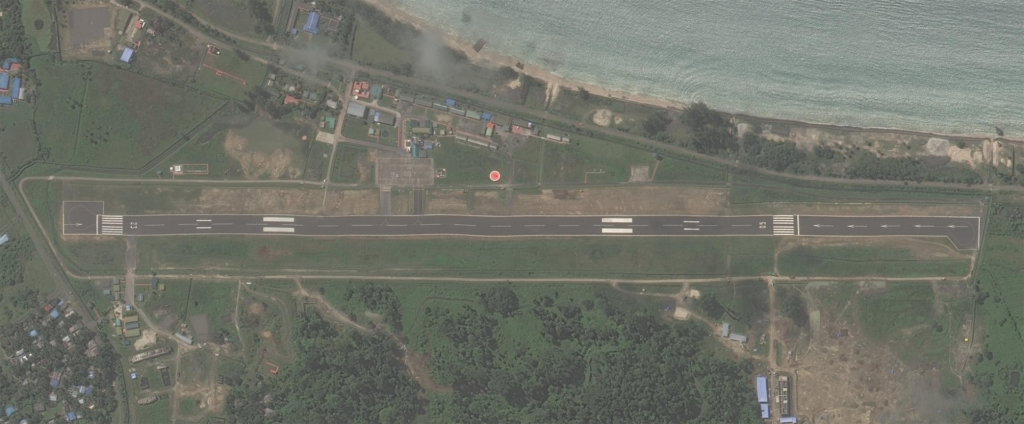
Delhi Continues Strategic Investment in the Indian Ocean | Asia Maritime Transparency Initiative
In the last decade, India has made a concerted effort to enhance its maritime posture in the Indian Ocean. When AMTI last surveyed Indian maritime investments in 2019, many projects were ongoing. While not every planned upgrade has gone through in the years since, India has more than made up for...
Pitkä artikkeli
As President Biden welcomes leaders of the Association of Southeast Asian Nations to a special summit this week in Washington, D.C., his administration is affirming Beijing as the U.S.’s main rival and underscoring the region’s importance in U.S.-China competition. The two-day event is part of the U.S effort to woo ASEAN members caught in a delicate balancing act between superpowers.
But China has been wooing as well, and not just with the trade and investment that are likely its most powerful levers of influence in Southeast Asia. Over the past decade, Beijing has steadily expanded its media influence in these countries in four key ways, as a means of shaping their views.
China’s most straightforward method of media outreach is directly broadcasting or publishing its state media content in target ASEAN countries. Xinhua, China’s official state media agency, has print bureaus in every Southeast Asian country. TV news channels CCTV-4 and the English-language CGTN likewise operate in nearly every country in the region, while China Radio International airs multilingual content in Vietnam, Laos, Cambodia, Thailand, and Myanmar. Xinhua is a ministry-level agency directly under the State Council, while the other media organizations all operate under the Chinese Communist Party Publicity Department.
China also airs its media through partnerships and content-sharing agreements with foreign media organizations in the target countries. Such agreements are attractive to Southeast Asian countries in part because they provide free content for local media to use. China, of course, uses them to inject its preferred narratives, laundered through familiar news sources, into homes across the region. In Thailand, for example, at least 12 news organizations and websites had signed content-sharing agreements with Xinhua by late 2019, including the Thai news network TNN24 and the parent company of Khaosod, one of Thailand’s largest newspapers. Indonesia’s MetroTV signed a similar agreement in 2019. In the Philippines, the Presidential Communications Operations Office, which runs the Philippine News Agency and other state media outlets, has signed multiple agreements with the Chinese government in the last five years for content-sharing, joint media production, and other forms of media cooperation.

Four Ways China Is Growing Its Media Influence in Southeast Asia
Beijing is trying to burnish its image in the region. What if it took aim at America’s instead?
Chinese Z-10 attack helicopter has, apparently, entered Taiwan’s air defense identification zone, or ADIZ, and, for the first time, crossed the so-called “median line,” an informal boundary running down the center of the Taiwan Strait. The appearance of the attack helicopter, which is operated by both the People’s Liberation Army Ground Force and the Air Force Airborne Corps, and is also designated WZ-10, marks the latest new Chinese type to enter this sensitive part of the ADIZ. It also points to the growing importance of rotary forces around the Taiwan Strait, including the massive Chinese helicopter base that’s strategically positioned to support future operations in the Strait or even a potential invasion of Taiwan.

Chinese Z-10 Attack Helicopter Flew Into Taiwan’s Air Defense Zone For First Time (Updated)
A single example of the Chinese attack helicopter ventured far out into the Taiwan Strait today.

